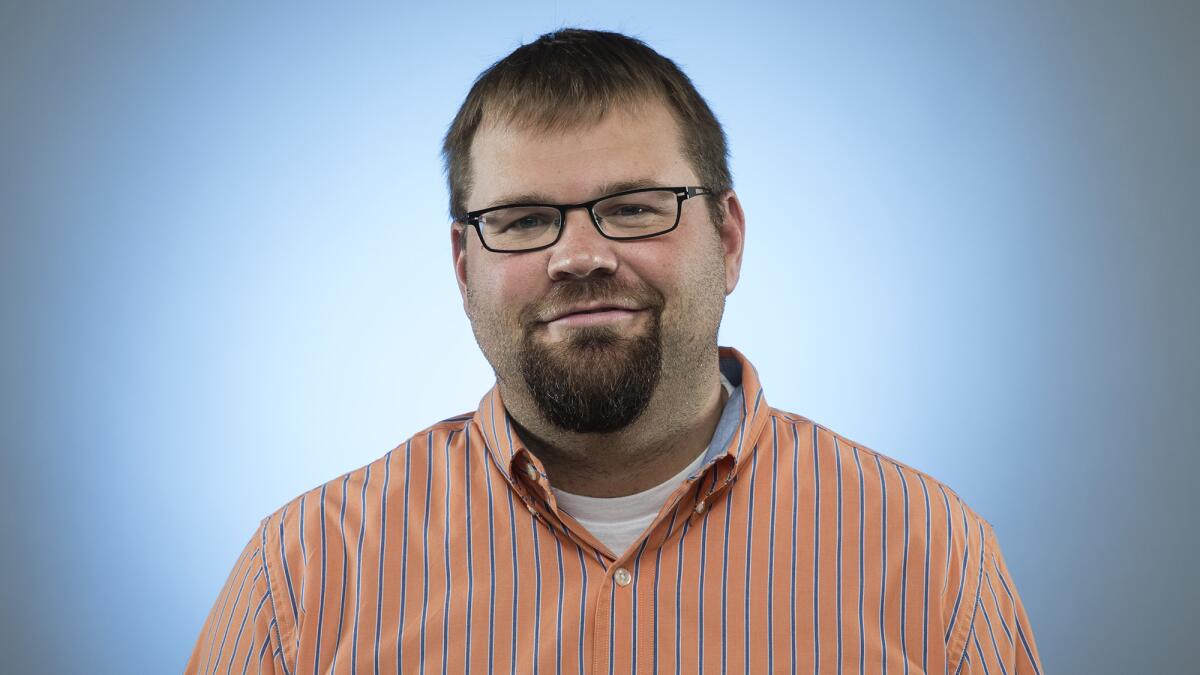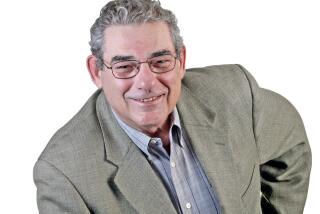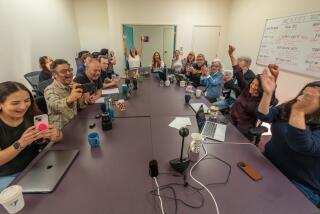John Adams, minister-turned-journalist who championed digital storytelling, dies

- Share via
John Adams, a minister-turned-journalist who expanded The Times’ digital footprint by exploring new forms of storytelling and was part of the team that won a Pulitzer Prize for the paper’s coverage of the 2015 mass shooting in San Bernardino, has died after a long battle with cancer. He was 46.
Upbeat, driven and quick to win friends, Adams died Thursday in hospice care in Illinois, a painful ordeal he shared on social media with a mix of dark humor and unvarnished honesty.
“Today I was called a ‘terminal cancer patient,’” he wrote on Twitter days before Thanksgiving. “Yes, I realized that’s what that meant when going into hospice but also it’s different when you hear it as your descriptor for the first time from a rando.”
Adams arrived at The Times in 2010 as newspapers across America were scrambling to transition to digital-first operations as print readership dwindled and people increasingly turned to their laptops and cellphones to find out what was happening in the world.
“John really understood digital journalism and the need to make changes and make them quickly,” said Kimi Yoshino, a former Times managing editor. “In many ways he was ahead of his time.”
Adams took a nontraditional route to journalism. The son of a Baptist minister, he became a youth pastor and worked with children in the Midwest, New England and the Bay Area who struggled with family turmoil, school or just life in general. He traveled to Haiti and other countries where lives had been upended by natural disaster, poverty and political indifference.
His decision to leave the church was complicated, his friends said.
When asked, his stock answer was that he “gave up the church for beer.” Milwaukee Journal Sentinel Editor George Stanley told the Arizona Republic that it went deeper than that. Adams, he said, had an epiphany on one of his missions and realized that, while his church fretted over drumming up funds to buy new carpeting for the foyer, he could do more to help people as a journalist.
“He cared deeply about journalism, coming to it well into his adulthood,” said Megan Garvey, a former Times deputy managing editor who was Adams’ supervisor. “I think that gave him, with his experiences as a minister, a really unique perspective on stories and the people we cover.”
In addition to The Times, Adams worked at the Milwaukee Journal Sentinel and the Arizona Republic, where he was credited with helping the paper more than double its online subscriptions. He also operated a sports website, a podcast and a blog about living with cancer, from the fears and excruciating pain to the beauty of long friendships.
At The Times, he was part of a team of reporters, photographers, designers and editors that won a Pulitzer for its coverage of the terrorist attack at the Inland Regional Center in San Bernardino, which left 14 dead, 24 injured and a mystery that stretched from the Inland Empire to Saudi Arabia.
Adams also taught journalism at USC, where he’d earned a master’s degree after stepping down as a minister.
Yoshino said Adams could be intense, but that it came with a playful sense of humor. “He had a way of making a person feel as though they were his best friend, though the truth was he really had hundreds of best friends.”
In his final tweets, he crowed after his beloved University of Michigan Wolverines toppled nemesis Ohio State in late November and then chronicled his final road trip with a group of friends — a long ride to hospice in a rented RV large enough for his two dogs.
He is survived by his parents, John and Marsha Adams, and a sister, Stacey Adams Hibbert.
More to Read
Start your day right
Sign up for Essential California for the L.A. Times biggest news, features and recommendations in your inbox six days a week.
You may occasionally receive promotional content from the Los Angeles Times.







